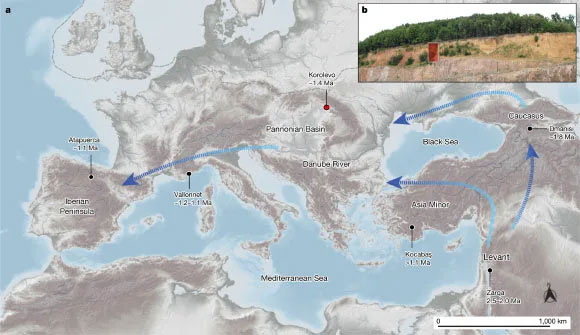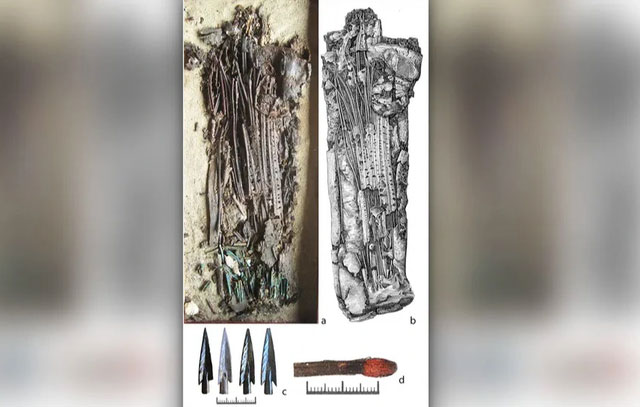On the Tysa River in Western Ukraine, an ancient human race left behind something that could help reshape the course of history.
From the outside, what researchers found just looks like a strange stone . But it is a priceless archaeological treasure, because it is the earliest evidence of human presence in Europe . Of course, with the artifact’s age of 1.42 million years old , they belong to a different species of human.
This treasure was found at the Korolevo archaeological site on the banks of the Tysa River in western Ukraine, supporting the hypothesis that this continent was invaded by humans from the East and Southeast, according to Sci-News.
 Another species of human explored Europe by going around West Asia, reaching Ukraine and then gradually moving towards Western Europe – (Photo: NATURE).
Another species of human explored Europe by going around West Asia, reaching Ukraine and then gradually moving towards Western Europe – (Photo: NATURE).
Slightly east of Europe there is an important site in Dmanisi – Georgia, where sediment layers contain human skulls and stone tools dating back about 1.85-1.78 million years
According to Dr. Roman Garba from the Institute of Archeology and the Institute of Nuclear Physics of the Czech Academy of Sciences and his colleagues, the trail from Africa to Dmanisi, through the “corridor” of the Levant, is consistent with the phenomena. Mode-1 stone objects in Jordan’s Zarqa Valley.
Jordan is located at the gateway between Asia and Africa, where the artifacts from Zarqa are about 2.5 million years old.
 Stone tools unearthed in Ukraine – Photo: NATURE
Stone tools unearthed in Ukraine – Photo: NATURE
Thus, we can rewrite history as follows: Another human species from Africa gradually migrated to Jordan to go deep into the Levant – the “fertile crescent” where many Middle Eastern countries are located today. – then continued to advance into what is now Georgia.
From there, over millions of years, they found their way to Europe.
The human species that created the stone tools discovered in Ukraine was identified as Homo erectus , an extremely special species of the genus Homo that can include up to 10 species.
Homo sapiens also belongs to this genus but is the youngest species, while Homo erectus may be the oldest species, appearing on the planet more than 2 million years ago.
They have brought many new breakthroughs to create a human world completely different from the world of their predecessors.

The most unique thing is the ability to make stone tools in an “industrial” style, that is, following a common technique, passed down through generations, gradually improved and upgraded.
This is not the first time treasures from other humans have appeared in Korolevo.
This land contained raw materials for Stone Age humans. Currently, with a layer of loess and pale soil accumulated 14 meters deep, it promises to expose countless more interesting artifacts.
Artifacts from 7 different periods have been excavated here since 1974, with the most recent being 30,000 years old, and the oldest being the newly discovered treasure.
New research has just been published in the scientific journal Nature.





